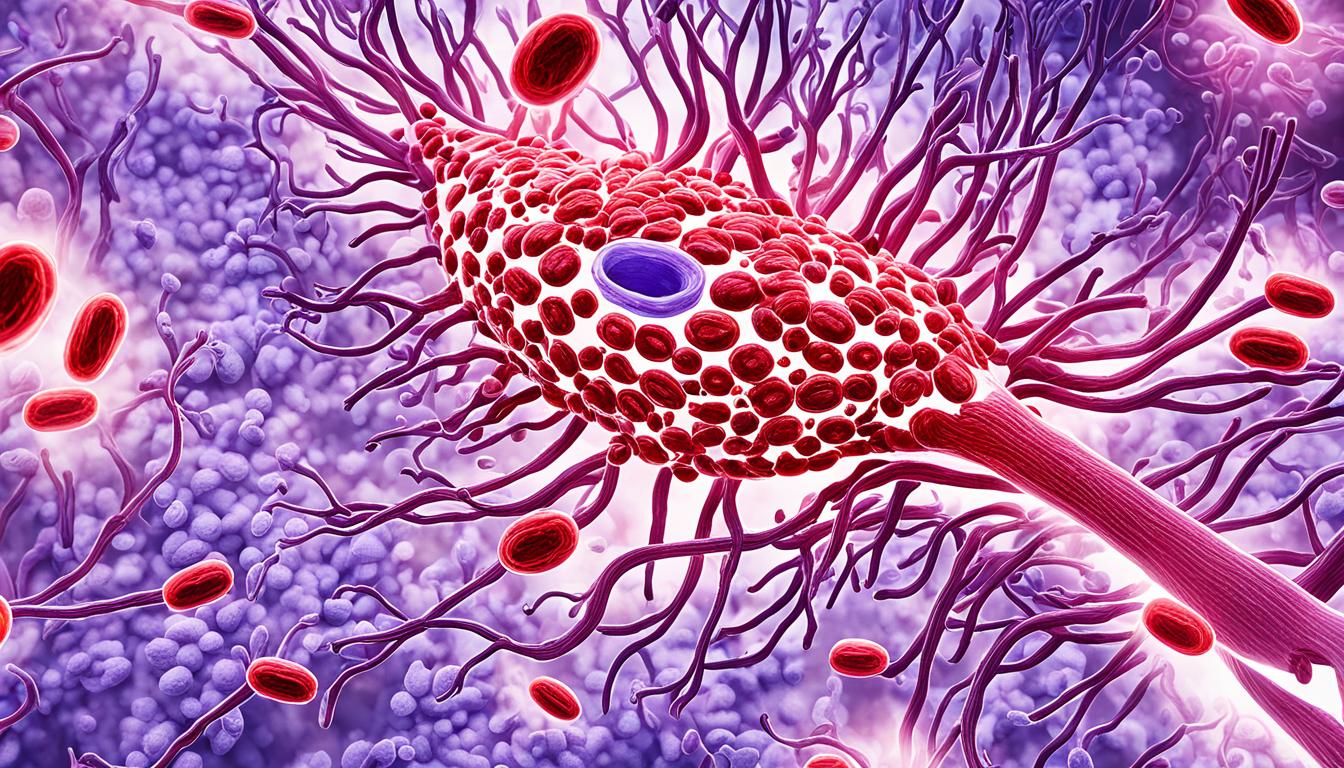Primary polycythemia, or polycythemia vera, is a rare form of blood cancer. It makes the body’s bone marrow produce too many red blood cells. This thickens the blood and increases the risk of blood clots. Some people may face symptoms like headaches, dizziness, fatigue, and blurred vision.
Itchy skin, tingling in the hands or feet, and feeling full after eating are some signs of polycythemia vera. Other symptoms can include joint swelling, unusual bleeding, and difficulty breathing. The exact reason behind this disease is not known, and it doesn’t usually pass from parents to children. Polycythemia vera affects adults aged 50 to 75, with men showing a higher chance than women.
People with this condition may face blood clots, an enlarged spleen, and problems from having too many red blood cells. Getting proper medical help is key to dealing with polycythemia vera. There are treatments like stem cell therapy that can help.
Stem cell therapy aims to fix the problem by replacing unhealthy stem cells with healthy ones. This restores the balance in blood cell production. It’s vital for individuals with polycythemia vera to stay in close touch with their doctors. They should watch for any new symptoms or issues.
Key Takeaways:
- Primary polycythemia, also known as polycythemia vera, is a rare blood cancer that leads to the overproduction of red blood cells.
- Common symptoms of polycythemia vera include headaches, dizziness, fatigue, itchiness, numbness, tingling, and shortness of breath.
- The exact cause of polycythemia vera is unknown, but it is not inherited from parents.
- Men are more susceptible to polycythemia vera than women, and it is more common in adults between the ages of 50 and 75.
- Complications of polycythemia vera can include blood clots, an enlarged spleen, and rare cases of other blood disorders.
- Proper medical care, including stem cell therapy, is crucial for managing and treating polycythemia vera.
Causes and Risk Factors of Primary Polycythemia
Primary polycythemia happens when a gene mutation changes how our body makes blood cells. This affects the bone marrow. The bone marrow makes too many red and white blood cells, as well as platelets.
The exact cause of this mutation is a mystery. It’s not something passed down from parents. Instead, it shows up on its own. Age is a big risk factor for the disease, especially between 50 and 75 years old. Men are also more likely to get the disease than women.
It’s important to remember, having these risk factors doesn’t mean you’ll get polycythemia vera. It just raises your chances.
Complications and Secondary Conditions of Polycythemia Vera
Polycythemia vera is a rare blood cancer. It can cause several problems needing serious care. One big issue is a higher chance of blood clots. The blood thickens, and platelets don’t work right. This can lead to strokes, heart attacks, or blockages in the body’s blood vessels.
An enlarged spleen is another possible issue. This happens as the spleen tries to handle the extra blood cells. It might cause pain in the upper left belly. Enlarged spleens are often seen in those with polycythemia vera.
The high red blood cell count in polycythemia vera patients can lead to more issues. It could make sores in the stomach, intestines, or throat. Joints might also get inflamed because of too many red blood cells. All of this can seriously affect a person’s health and life.
In some rare instances, polycythemia vera can change into other blood disorders. These include myelofibrosis, myelodysplastic syndrome, and acute myeloid leukemia. Dealing with these new conditions needs special care and close watch by doctors.
Conclusion
Managing polycythemia vera, a rare type of blood cancer, requires specialized medical care. Some patients might consider stem cell therapy to help them. This therapy replaces damaged stem cells with healthy ones. It’s a big step towards better health.
In addition to stem cell therapy, managing this disease means a few things. You have to keep up with your doctor’s visits. Changing some lifestyle habits and sticking to your treatment plan are also important.
For many, phlebotomy is used to lower the number of red blood cells. Taking low-dose aspirin can stop blood clots. It’s key to work closely with your healthcare team. They will help you watch over your health and tackle any issues that come up.
Today, there are more ways to treat this disease than ever before. By taking an active role in their healthcare, patients with polycythemia vera can lead better lives. Staying proactive and following doctor’s advice are crucial steps.

